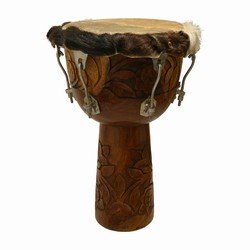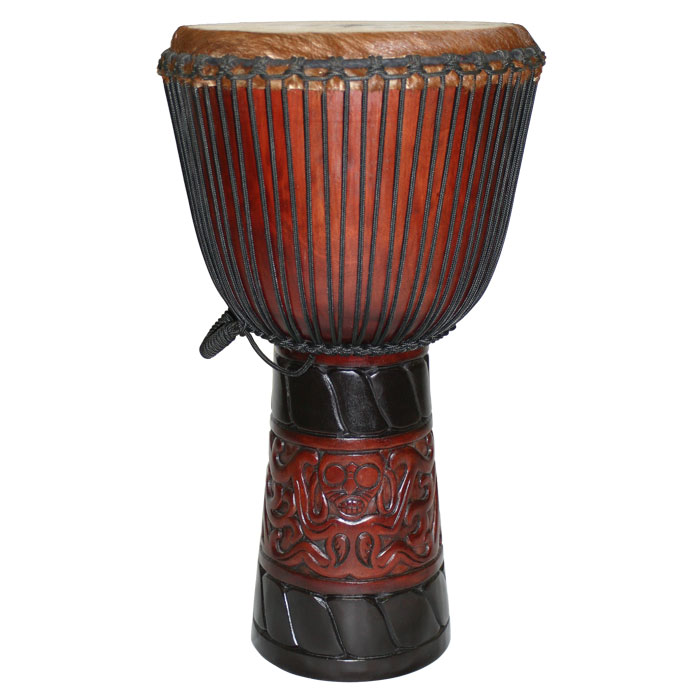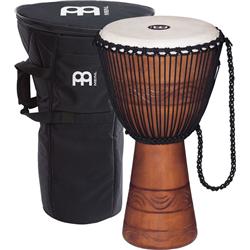African Djembe
Contents
African djembe drums differ from standard djembes in the sense that they offer a more authentic representation of the African-style percussion.
Many of the djembes available on the market right now are made of synthetic materials like fiberglass that really fail to capture the essence of this African drum.
There are many advantages to having a synthetic drum, but the synthetic djembe is nowhere near as beautiful of an instrument as the wooden djembe.

Another problem with synthetic drums is that they use a mechanical tuning system consisting of lugs and rims to tune instead of the Mali Weave rope tuning commonly used in authentic African hand drums.
The djembe above shows a hybrid mixture of authentic wooden shells and real animal hide drum heads (with hair and everything), but is uses a system of rims and lugs to tune.
It’s nice for tuning, and makes changing out broken drum heads a breeze, but I love the look of the ropes much better than the hardware.

Another advantage of wood shells is that you can find some highly detailed carvings and craftsmanship that you just can’t get with fiberglass shells.
X8 makes some really cool hand carved designs.
Meinl also has a couple nicely detailed shells. Be sure to look for them in the link below.
You can shop for African-Style Djembe Drums here.
There is a wide selection of African drums to choose from, and each djembe has it’s own unique design and finish.
You can also find more djembe designs and styles, including synthetic drums on the djembe drum page (link at bottom of page).

If you purchase a nice looking African drum you’re going to want to protect your instrument. Don’t forget to keep your djembe safe with one of these Drum Bags.
Try These Pages:








New! Comments
Leave your comments below.